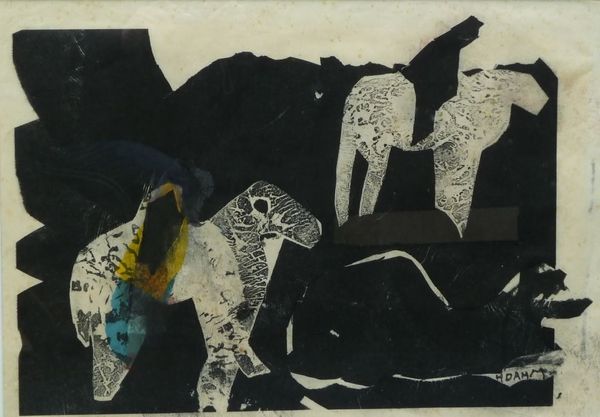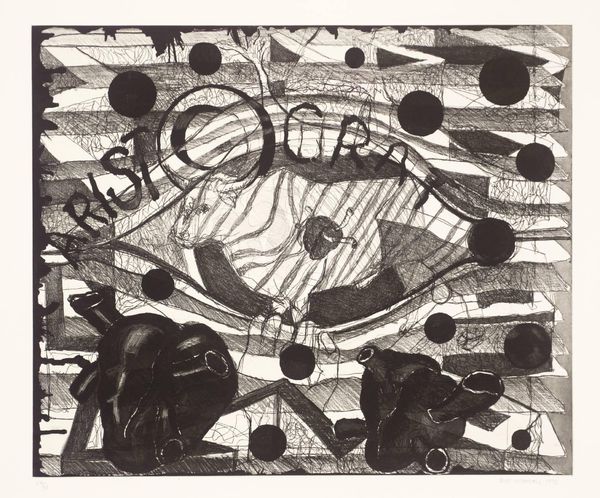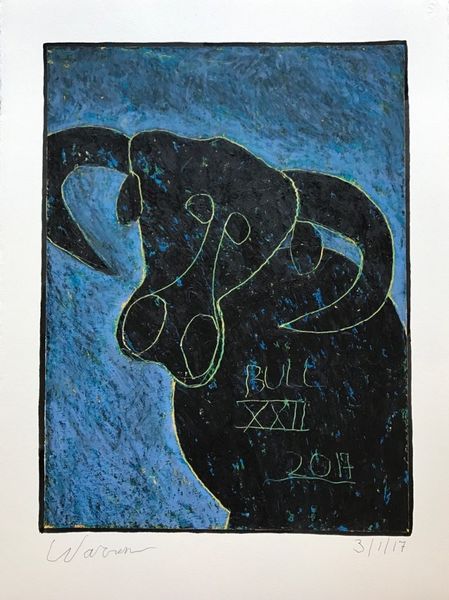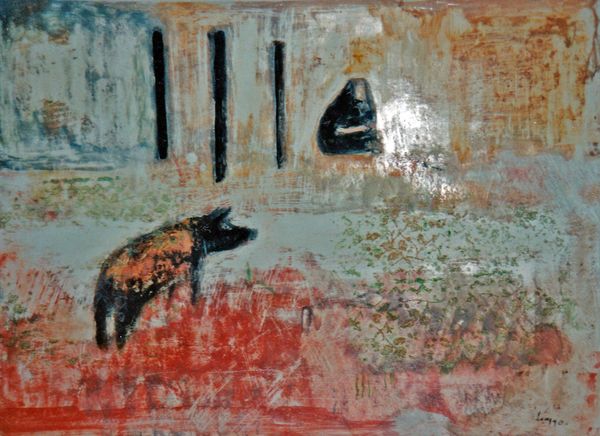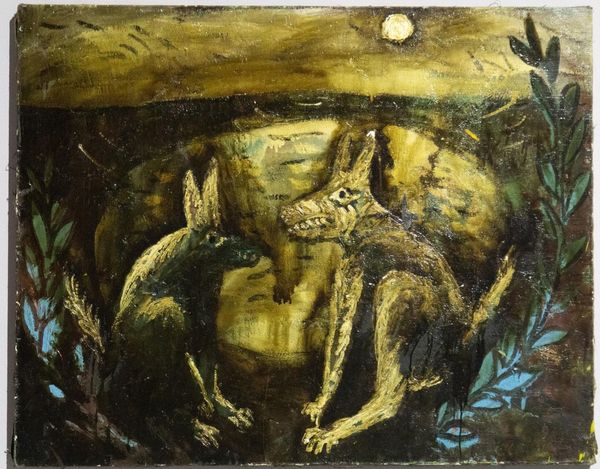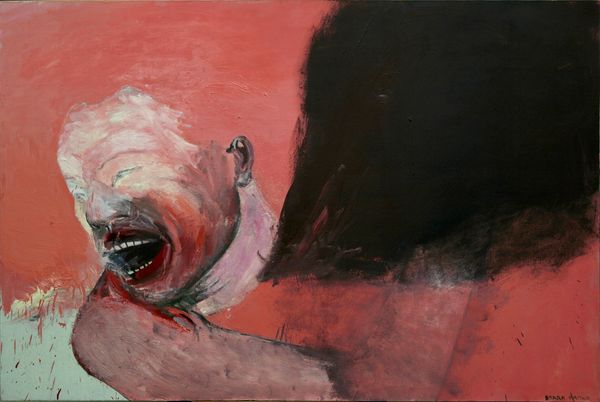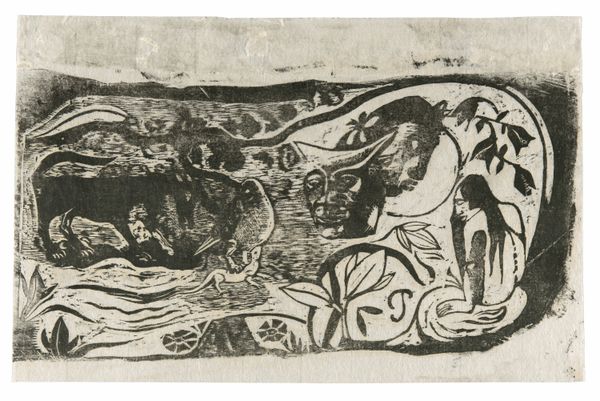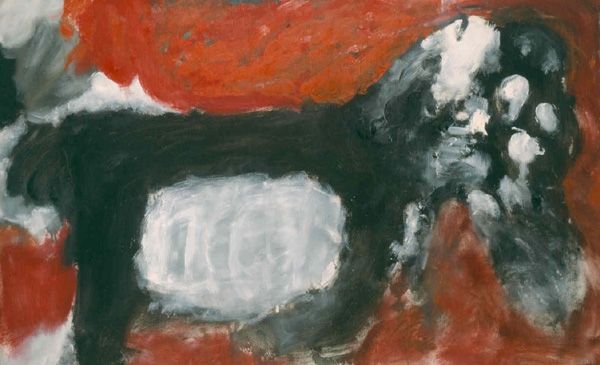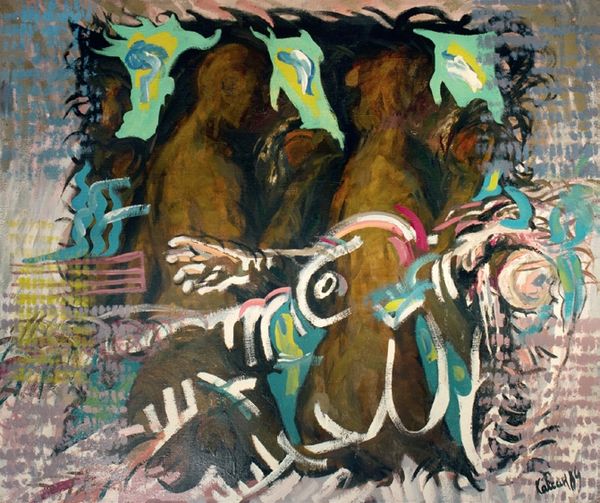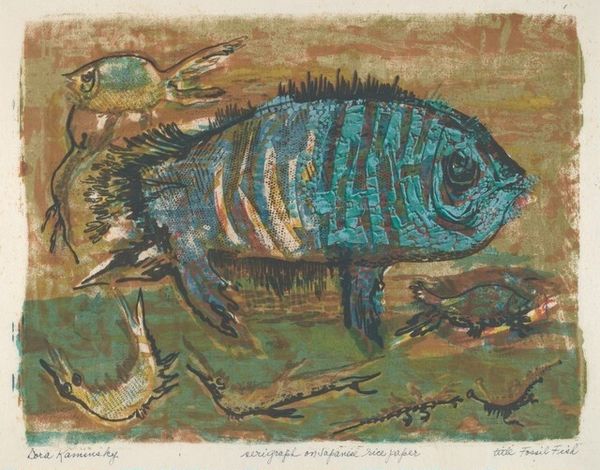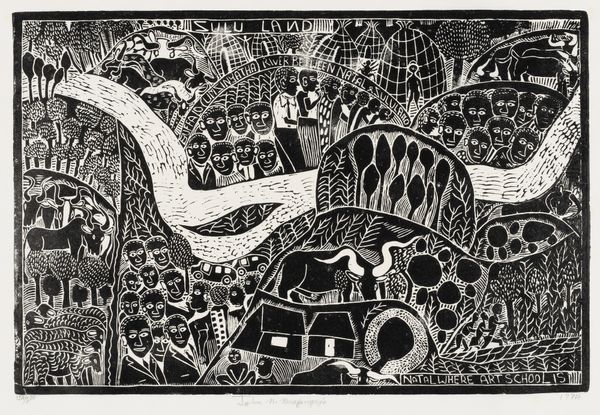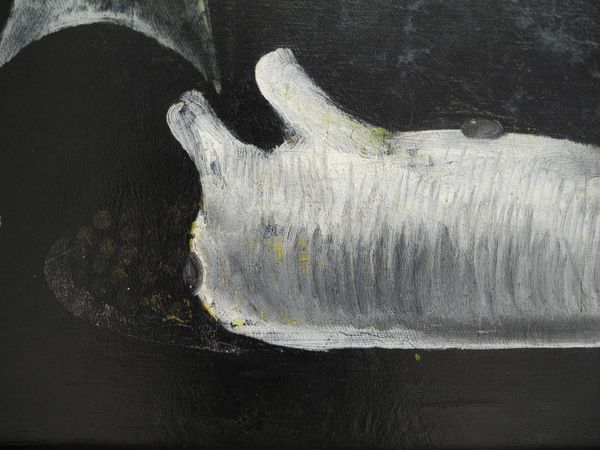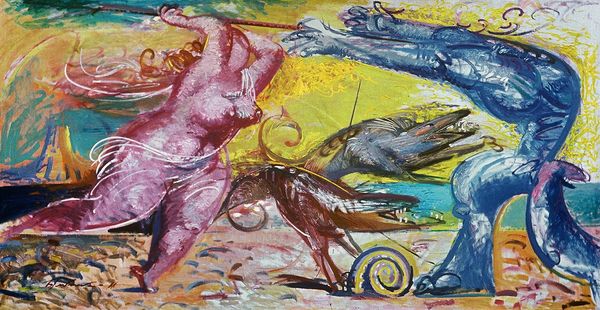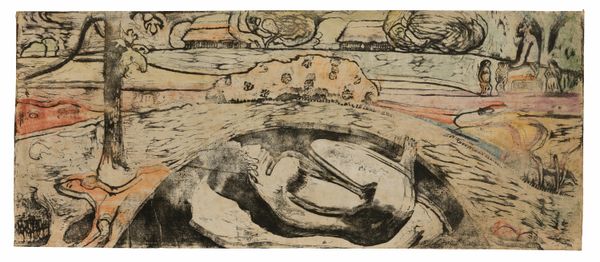
painting, oil-paint, wood
#
portrait
#
animal
#
painting
#
oil-paint
#
figuration
#
folk-art
#
wood
#
painting art
#
regionalism
Dimensions: 85.09 x 129.54 cm
Copyright: Fair Use
Editor: This is William Hawkins' "Iguana" from 1981, an oil painting on wood. The first thing that strikes me is its flattened perspective and bold color choices. What do you see in this piece? Curator: Immediately, the composition asserts itself. Note the use of color; the juxtaposition of the cool, muted blues in the background against the earthier tones of the iguana’s form creates a tension that enlivens the pictorial space. Also, the way the artist has applied the paint handling: rough, seemingly hurried strokes contribute to the piece's raw energy. Does this surface treatment suggest any specific intentions or visual effects, in your view? Editor: It almost feels primal, less concerned with perfect representation and more focused on capturing the essence of the animal. The lack of depth adds to that feeling. Curator: Precisely. The iguana’s body is rendered with simplified shapes, its contours outlined boldly. Consider the overall structure, not just what is represented, but the arrangement of these compositional elements. How does this arrangement influence your reading of the work? Editor: It feels like a symbol or sign, rather than a portrait. I guess, its structure really supports the symbolic potential more than the pictorial. Curator: An insightful observation. By moving away from strict mimesis, the artist directs us towards the painting’s structural integrity. Ultimately, "Iguana" embodies the vitality inherent in elemental forms and forceful brushwork. Editor: This discussion really highlighted how to consider the structure, forms and arrangement in an artwork in their own right, beyond their relation to subject. Curator: Indeed. Focusing on those basic pictorial and material properties is really fruitful for approaching almost any kind of image or sculpture.
Comments
No comments
Be the first to comment and join the conversation on the ultimate creative platform.
